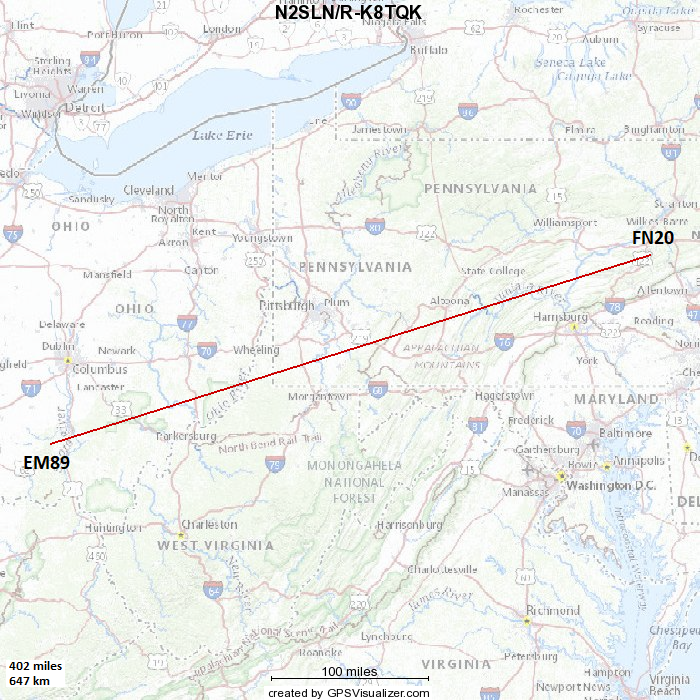
The next site was a new location in southwestern FN21. It was a rural roadside pulloff above 2000' elevation. Unfortunately, there were lots of tree attenuators in every direction, so I will be trying the next FN21 site on my list in 2024. One hour into this grid activation I saw my first flash of lightning and immediately began tearing down the antennas in the rain. The lightning flashes continued, but there was no thunder, so I was lucky that the storms were still a good distance away. Nonetheless, I used maximum speed in storing masts, antennas, and feedlines back in the cargo area of the van. Getting back on Interstate 81 northbound, I had good progress until I suddenly saw miles of brake lights in front of me. After waiting more than an hour, traffic began to move again and I discovered that it was flash flooding that caused the traffic backup. I could see running water and small mounds of debris on the road. The National Weather Service reported one fatality on nearby US Route 11 as a result of the flash flooding southeast of Clarks Summit, PA.
Sunday morning I drove an hour to a northwest FN22 hilltop, hoping for early morning extended paths. The nearest hilltop disappeared in a fog bank which then enveloped my hilltop. Often times fog is an indicator of the right conditions for DX on the VHF+ bands, but not this time. The good news is that this was the highest elevation site I would be using in the contest. It was nice to work into rare FN24 on all 4 of my bands from here. I operated for about 2.5 hours and had lunch before heading north.
I arrived in FN23 and set up at a roadside pulloff with very few signal obstructions. The only bad thing here was setting up in rain, seeing the rain disappear while I was operating, then tearing down in the rain. I finally worked FN20 for the first time this weekend on all 4 bands (one of the most populated grids), missing it when I was in it and close to it the previous day. East/west paths were great from here, and the slow rotor (2 minutes for a full rotation) sure got a workout. This grid activation gave me the second highest QSO count.
Being short on sleep from yesterday's unexpected delay on the interstate caused me to get tired, so I decided to skip the FN13 activation. I drove directly
to my FN12 hilltop south of Syracuse, NY. That was a great move because it netted me the highest QSO count of the contest (51 QSOs), and more than 3/4 were
Rochester VHF Group or Ontario VHF Association stations. Thanks to Peter VA3ELE/R for providing me with uncanny good signals from EN94 and FN04, which
are normally hard to find. A little more than 2 hours into this grid activation there was a small band opening on 6m which got me 3 contacts with stations in
the upper midwest (IL, MN, WI) and 3 new grids--rare for a September contest. At 10 PM when I was supposed to end the contest an hour early, I went outside
to eyeball the position of the antennas for lowering, and got blasted with heavy rain just as I was getting back inside the van. So rather than get soaked,
I decided to monitor the lights in the valley below. When they re-appear, that means the rain is about to stop. That was a good strategic move, because I
made 7 more contacts before the rain stopped, then had a long rain-free period for tearing down the antennas and making the 1-hour trip home. Two meters had
the most QSOs and grids of any band in this contest, but 432 provided the most QSO points.
POINTS SUMMARY
Band QSOs QSO pts. Mults.
------------------------------------------------
50 48 48 17
144 51 51 18
222 41 82 14
432 44 88 14
------------------------------------------------
TOTALS 184 269 63
+5 grids activated
68
--- Claimed score = 18,292 ---
